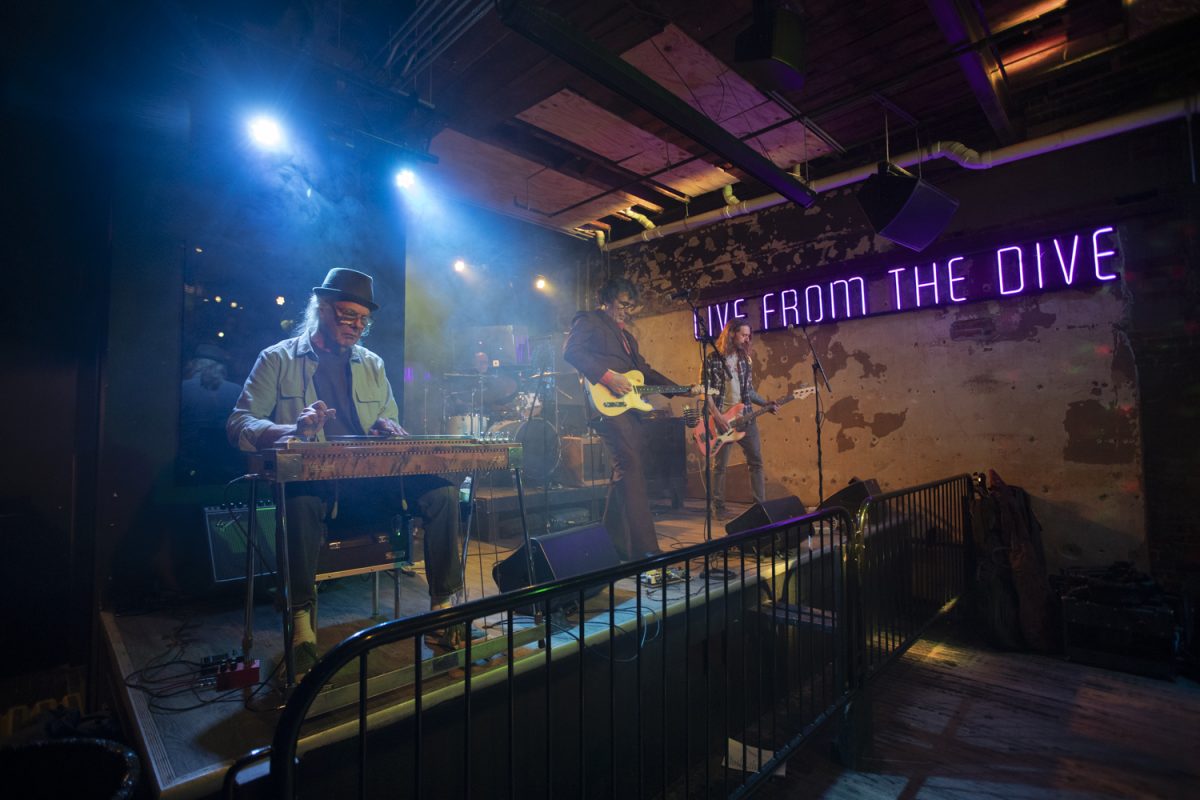By Claire Dietz
[email protected]
Keith Achepohl has been an artist since he can remember. Seventy of those years have been spent not only making art but also traveling the Mediterranean. Achepohl, a University of Iowa professor emeritus, will host a lecture 7:30 p.m. today in Art Building West.
Achepohl spoke with The Daily Iowan via phone about his life in art, his travels, and his upcoming reading.
Daily Iowan: What drew you to pursue a career in art?
Achepohl: There was never any question. I started drawing at a very early age and never thought there would be anything else.
DI: How would you describe your art?
Achepohl: Well, I’ve lived a long time; I’mover 80. This means that I have been making art for at least 70 years. Hopefully, in that time, I’ve grown from being one person to another person, and I think I’m a very different person in many ways from who I was years ago.
I’ve been very lucky to travel a great deal for at least 50 years, and my travels have been, to a great extent, what I use in subject matter. I’ve always either worked from nature, in the things around me because I’ve been a gardener all my life; in between working from nature, a lot has been determined by what I’ve seen. This means a lot of it is architectural because, basically, I’ve traveled the Mediterranean.
Art seeds art; what you do in your studio kind of tells you what to do next. And hopefully, we grow, as we get older, we grow. You can’t be [the same person] — look at the changes that have taken place in the world.
We’re all born with three basic things that dictate what we’re going to do: We all have a heart that tells us something about what we feel, we all have a head that gives us some intellectual power to deal with what we feel, and then we have a hand that tells us how we can physically put into effect what the head and heart are telling us what we should be doing.
DI: What sparked your travels? Did you receive grants?
Achepohl: I had a full ride to Turkey and Egypt, and those were major in determining that. But my first trip was to Italy, and then I taught in Venice for 15 years. I taught a course for the University of Iowa in Venice. Every July, I took a group of students to Venice, and I’ve kept doing that. In fact, in two weeks I’ll go up the Dalmatian coast and up through there to Venice again for a week.
DI: Did you feel this wanderlust when you were a child, or was it because of these art scholarships?
Achepohl: I had an incredible education. I was born in Chicago, and I grew up in the Elmhurst suburb of Chicago. I had a grandmother who, when I was about 13, 14, started taking me to the Art Institute of Chicago, so I really grew up in the Art Institute of Chicago. Then in high school, I had four years of Latin from a teacher; I sat in a room that was filled with replicas of ancient statues and a replica of the Parthenon and pictures of the Mediterranean. I have an Italian mother. In fact, I visited the little town in southern Italy where my grandfather was born. I’ve visited there several times, so that’s part of my blood to be there. My dad was basically of German heritage, and my mother was Italian, so all of those fed the need to go back to these places and find out. I also loved art history all of my life, and I had a great education at the University of Iowa.
I think I was born with a little bit of olive oil and red wine in my blood.
DI: What draws you back to Italy?
Achepohl: Well, it’s a glorious cultural background and you’re conscious of it, there’s no place, no city in the world that is as steeped in that as Venice, because Venice is a walking city, there’s canals, there’s no cars, you just walk or you get on a water bus. This makes the pace of life slower, you’re walking on ancient streets, and you’re touching ancient buildings, and those canals are reminders that water is constantly flowing … There’s something very magical about it. It’s been there for centuries, but it still lives, it may be a tourist mecca, but if you live there, you know how to avoid the tourists. It’s not easy, but you can do it.
DI: Have the places you’ve visited over the years contributed to your art?
Achepohl: This series of watercolors that are in the show now are all based on Mediterranean architecture. It has nothing to do with the work I did with nature, with plants; that was all directly based on trips to Egypt, and Turkey, and Italy. Where I was looking at great monuments, one of the most powerful things of the Mediterranean is the sense of light and shadow; wherever you go there is sunlight, and the Sun casts shadows, and they make for incredible shapes and incredible feelings of what the power of nature is all about. A lot of that is put into those watercolors.
One of the things you can’t help but notice these days in the Mediterranean is the repurposing of ancient architecture. As buildings fall apart, as they inevitably do, you start seeing how the stones and the walls get repurposed and used in other buildings. That’s what that whole series is kind of about, it’s about how that can still be very beautiful.
DI: What’s it like to throw all of your worthwhile possessions into a suitcase and live in a foreign country?
Achepohl: Well, you don’t take much with you; you take a suitcase and that’s it. I’ve learned to travel with very little. I put a lot of black clothes into a suitcase and look as un-American as I can while in Europe, and I think I fit in pretty well. And the other thing is, I was teaching at a university where they did teach English, so a lot of the students spoke English, but they were still native people. They were Turkish and Egyptian, but the thing is, they’re as curious about me as I am about them. You establish some sort of symbiotic relationship, very much a give and take.
DI: What will your lecture consist of? What should the attendees expect?
Achepohl: One, as I’ve traveled and as I’ve made art, I’ve also been collecting art. I have major holdings in a lot of stuff. In fact, about 10 years ago, the Art Institute of Chicago did the most important show ever held of African pottery, and it was my collection, and I’ve given a lot of it — they kept 65 pieces. I’ve collected prints, I’ve collected art from other places, but that’s always been a major part of what I do: I curate shows. Recently, I gave the University of Iowa a collection of Turkish weavings that I collected in more than 15 trips to Turkey.
The other part is work I’ve done in the last five years with a grant from the Morris Graves Foundation in California. And that’s all based on nature. It’s like I keep saying, we all plant our gardens, we all cultivate the gardens we want to live in, and we inevitably build a fence around our garden because we want to protect who and what we are. If we’ve done some things we like, and we’re content with it, then we’re willing to step outside the garden and find things that we want to bring back into our own garden — plant those ideas — and see how they grow into something different from what we had before. And I think that’s how my life has been, collecting seeds.
LECTURE: Keith Achepohl
When: 7:30 p.m. Today
Where: Art Building West
Admission: Free







